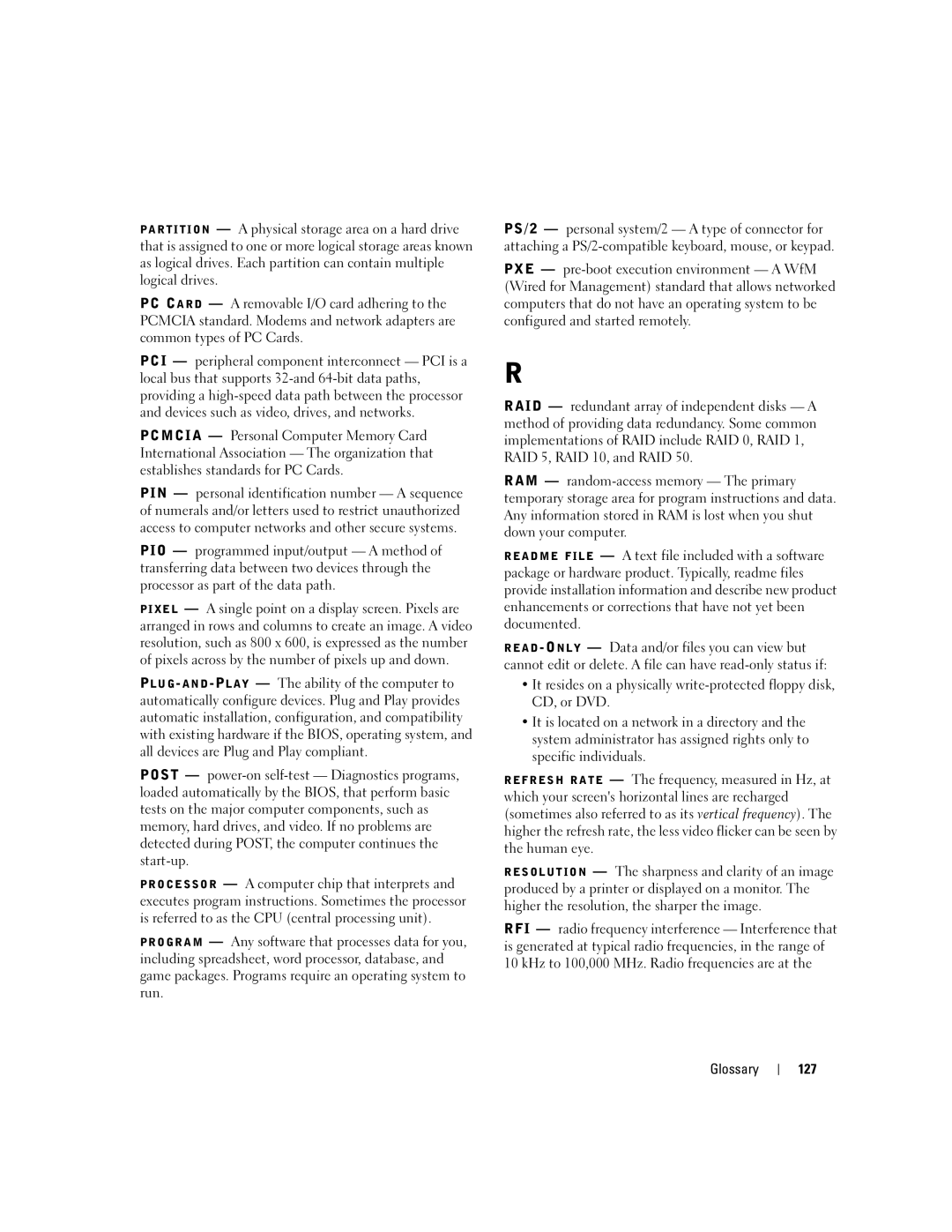PARTITION — A physical storage area on a hard drive that is assigned to one or more logical storage areas known as logical drives. Each partition can contain multiple logical drives.
PC CARD — A removable I/O card adhering to the PCMCIA standard. Modems and network adapters are common types of PC Cards.
PCI — peripheral component interconnect — PCI is a local bus that supports
PCMCIA — Personal Computer Memory Card International Association — The organization that establishes standards for PC Cards.
PIN — personal identification number — A sequence of numerals and/or letters used to restrict unauthorized access to computer networks and other secure systems.
PIO — programmed input/output — A method of transferring data between two devices through the processor as part of the data path.
PIXEL — A single point on a display screen. Pixels are arranged in rows and columns to create an image. A video resolution, such as 800 x 600, is expressed as the number of pixels across by the number of pixels up and down.
POST —
PROCESSOR — A computer chip that interprets and executes program instructions. Sometimes the processor is referred to as the CPU (central processing unit).
PROGRAM — Any software that processes data for you, including spreadsheet, word processor, database, and game packages. Programs require an operating system to run.
PS/2 — personal system/2 — A type of connector for attaching a
PXE —
R
RAID — redundant array of independent disks — A method of providing data redundancy. Some common implementations of RAID include RAID 0, RAID 1, RAID 5, RAID 10, and RAID 50.
RAM —
README FILE — A text file included with a software package or hardware product. Typically, readme files provide installation information and describe new product enhancements or corrections that have not yet been documented.
•It resides on a physically
•It is located on a network in a directory and the system administrator has assigned rights only to specific individuals.
REFRESH RATE — The frequency, measured in Hz, at which your screen's horizontal lines are recharged (sometimes also referred to as its vertical frequency). The higher the refresh rate, the less video flicker can be seen by the human eye.
RESOLUTION — The sharpness and clarity of an image produced by a printer or displayed on a monitor. The higher the resolution, the sharper the image.
RFI — radio frequency interference — Interference that is generated at typical radio frequencies, in the range of 10 kHz to 100,000 MHz. Radio frequencies are at the
